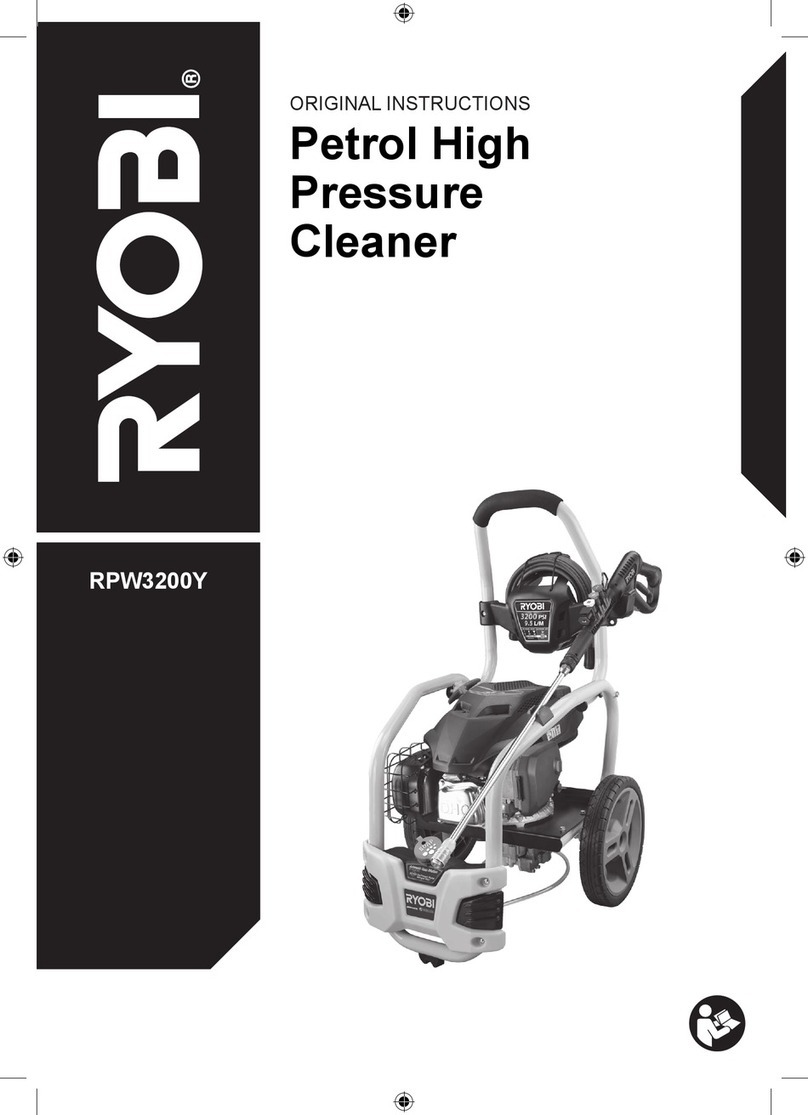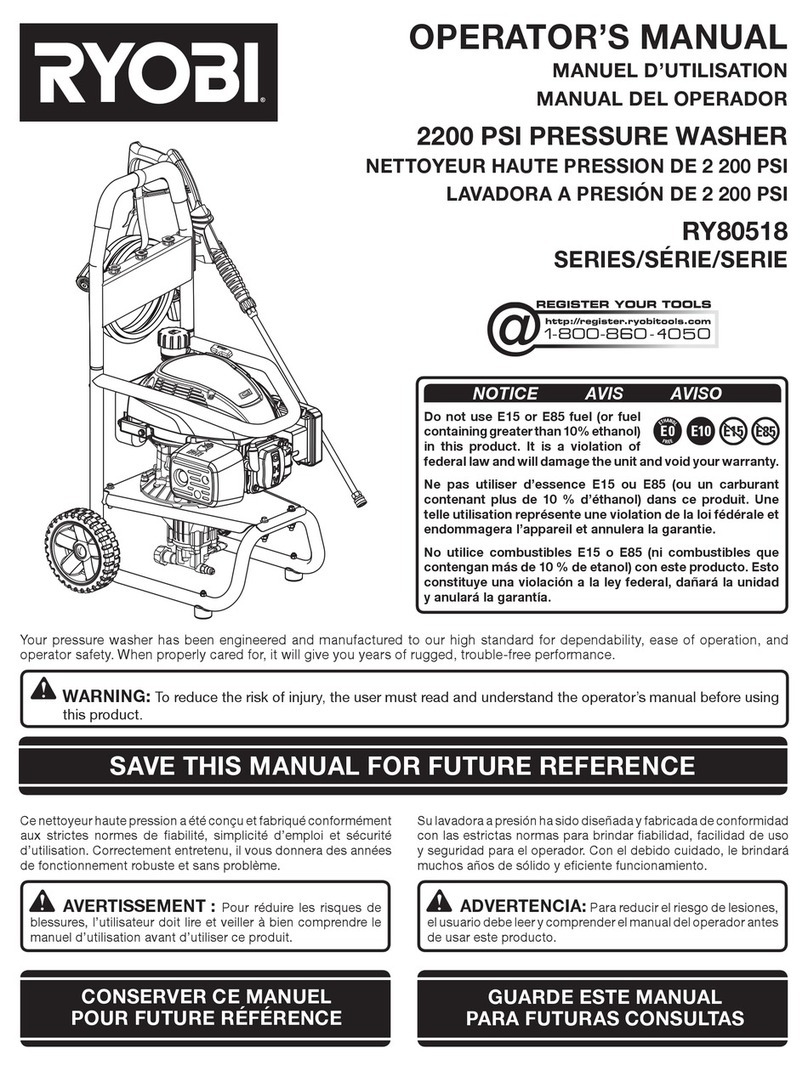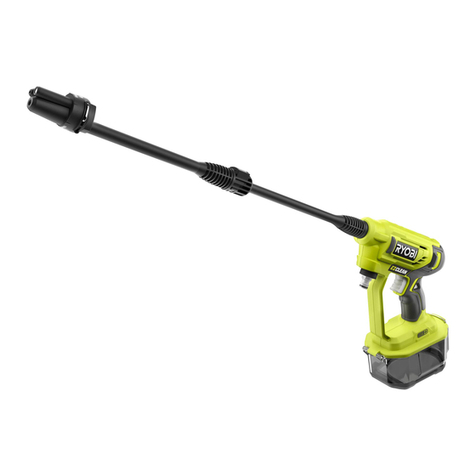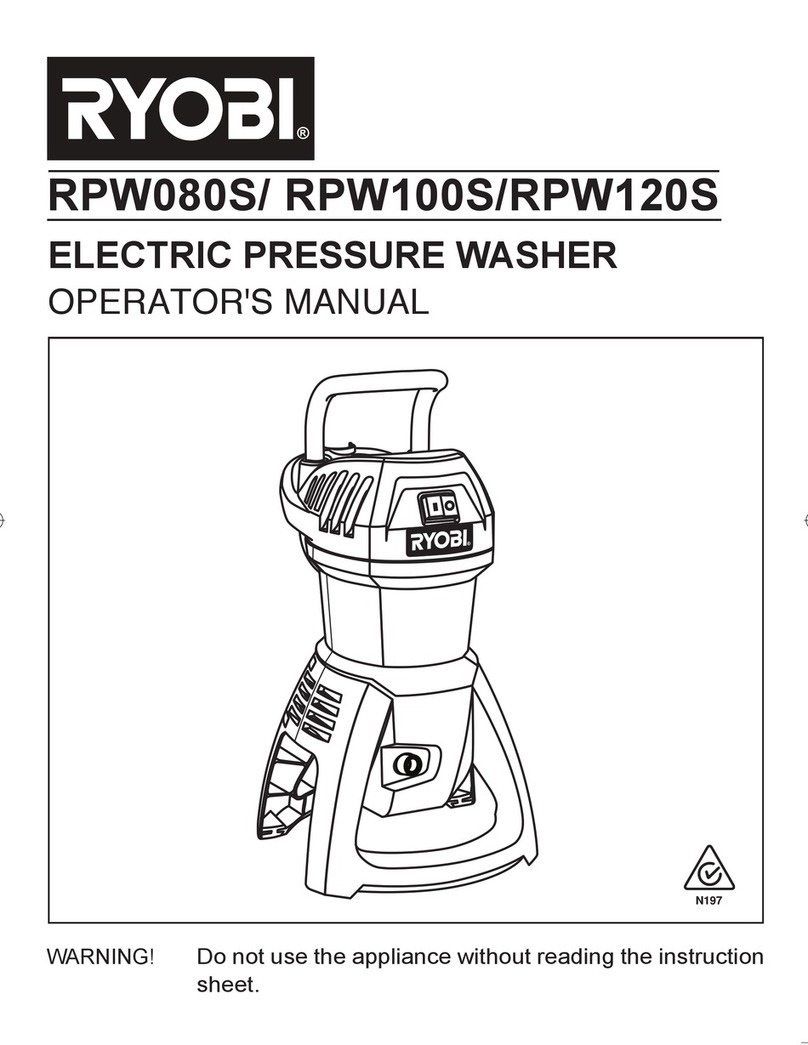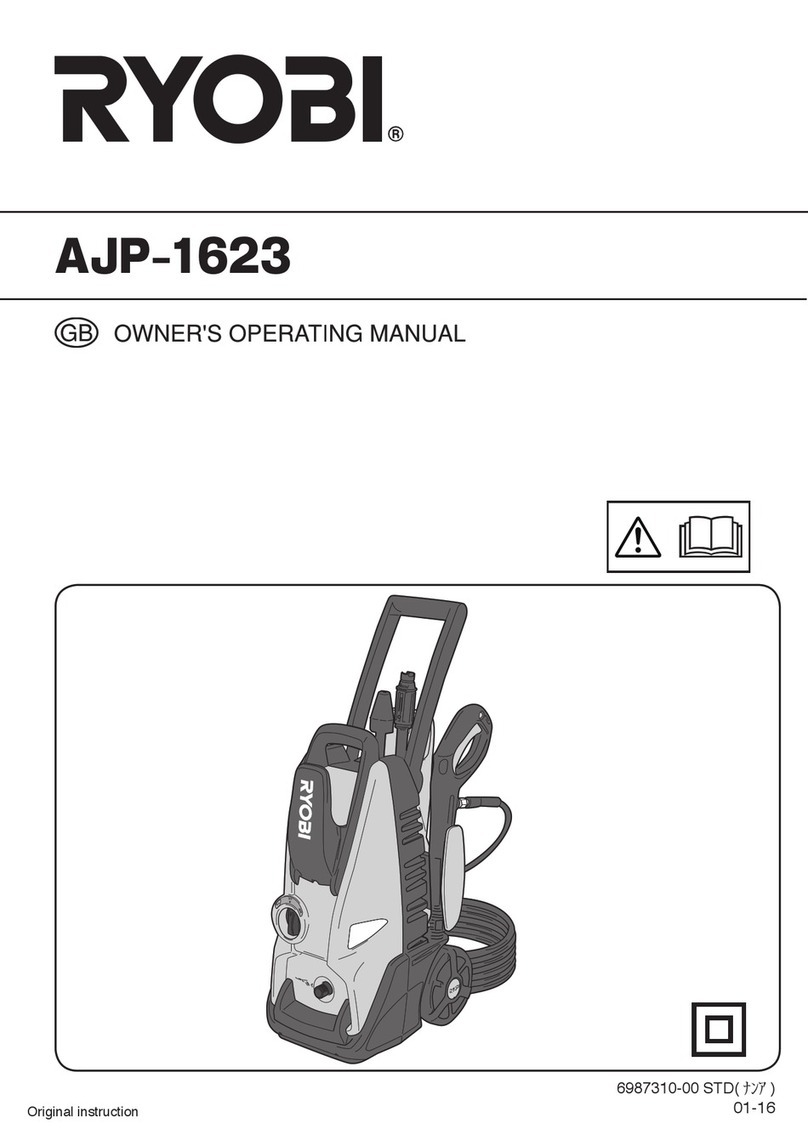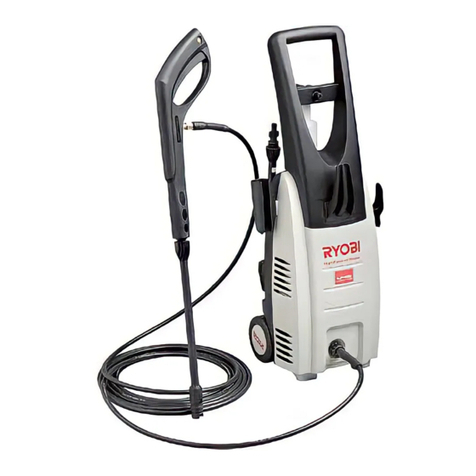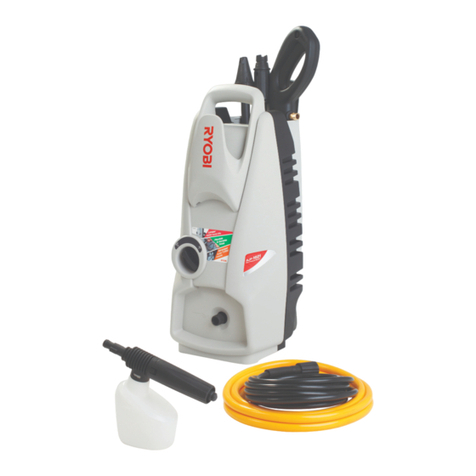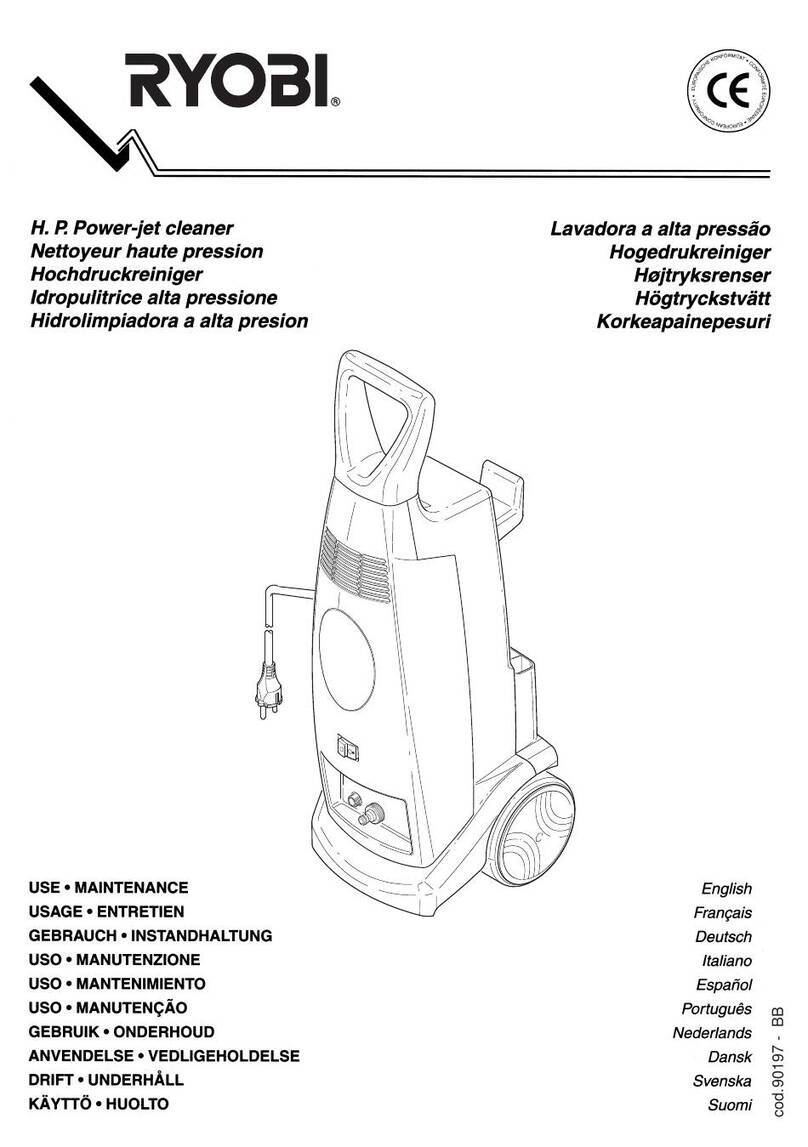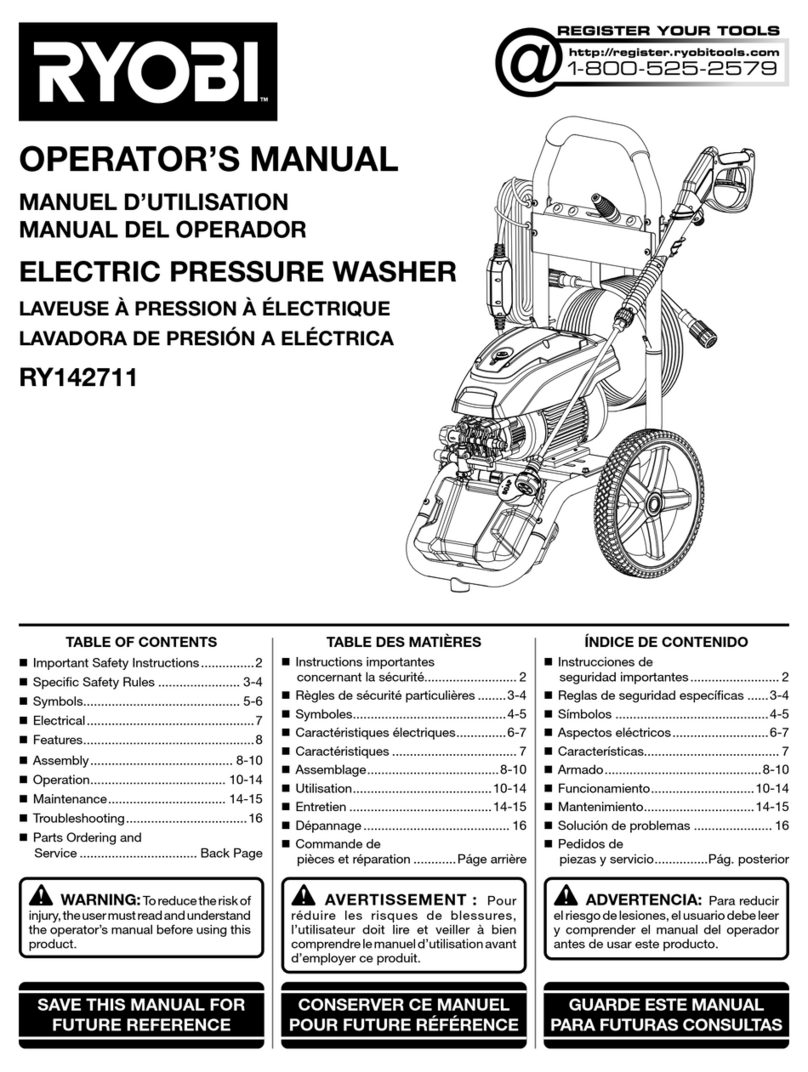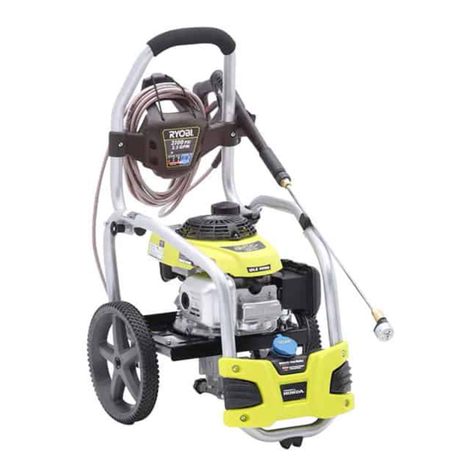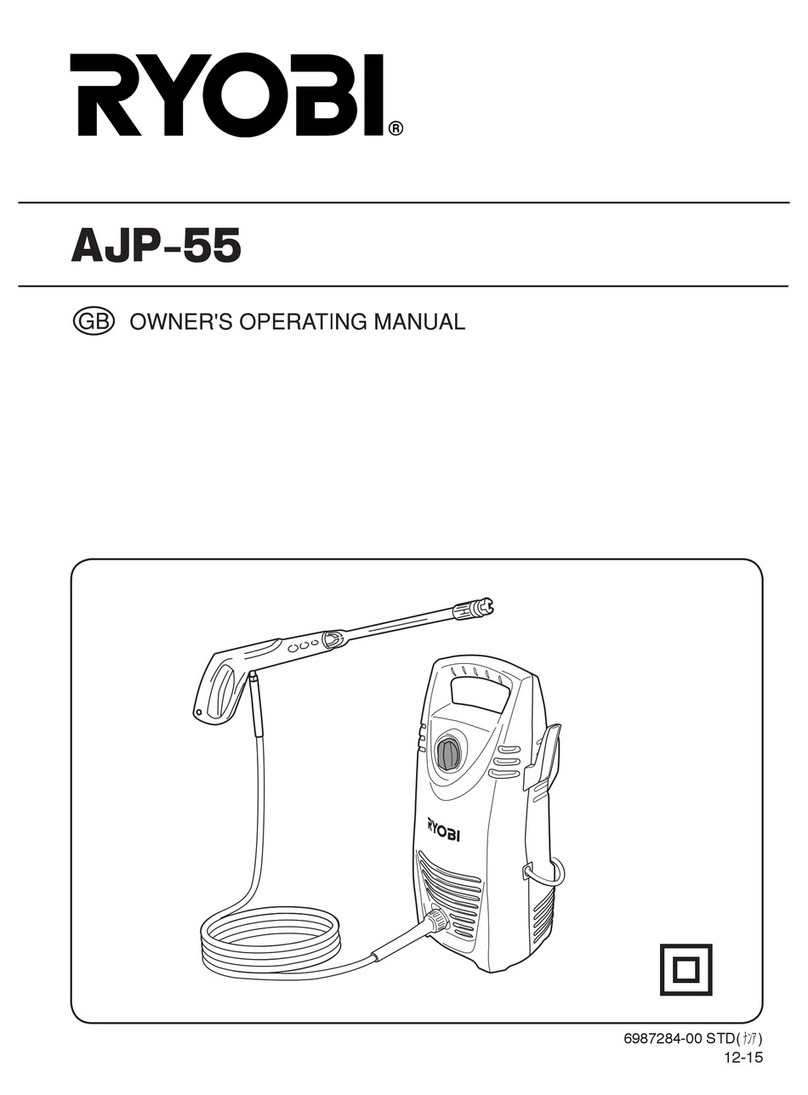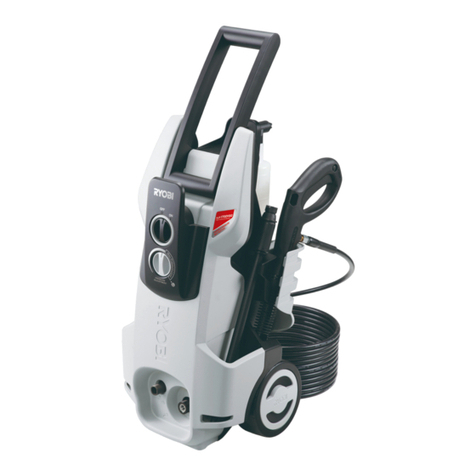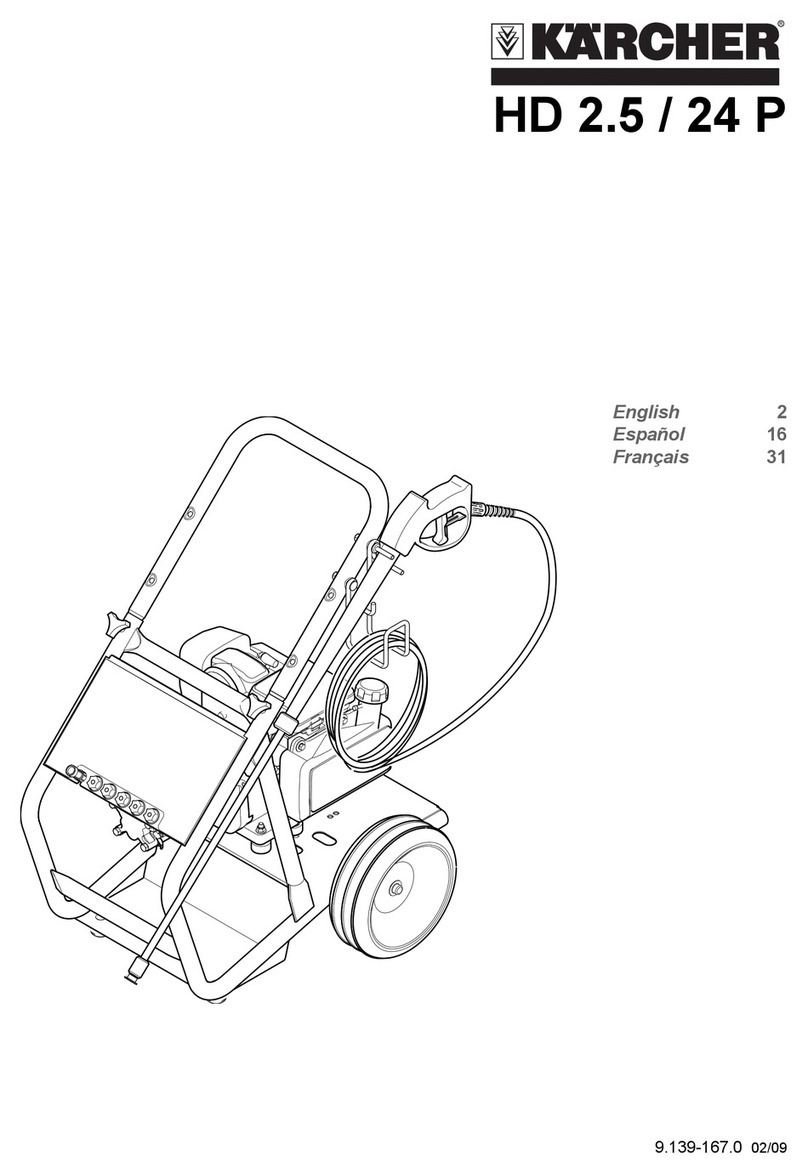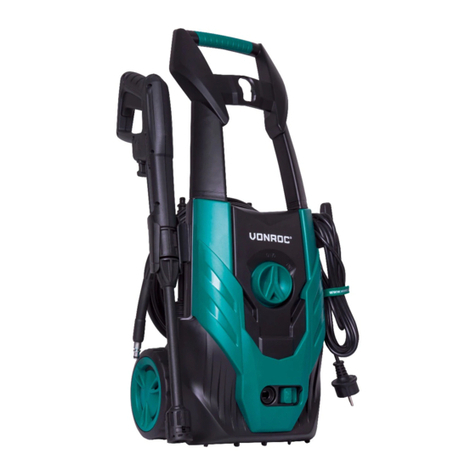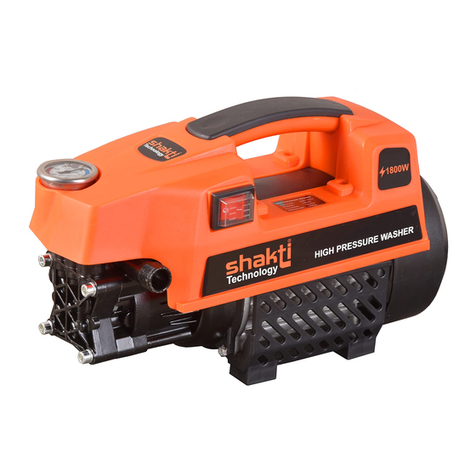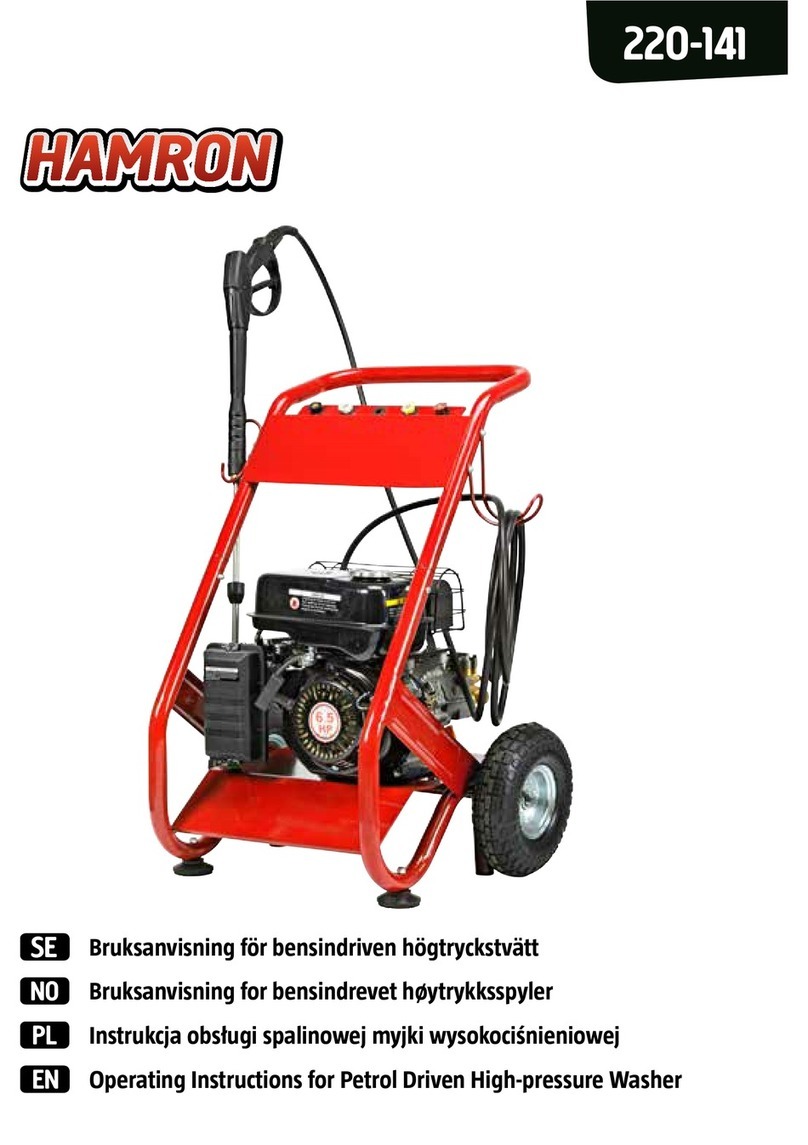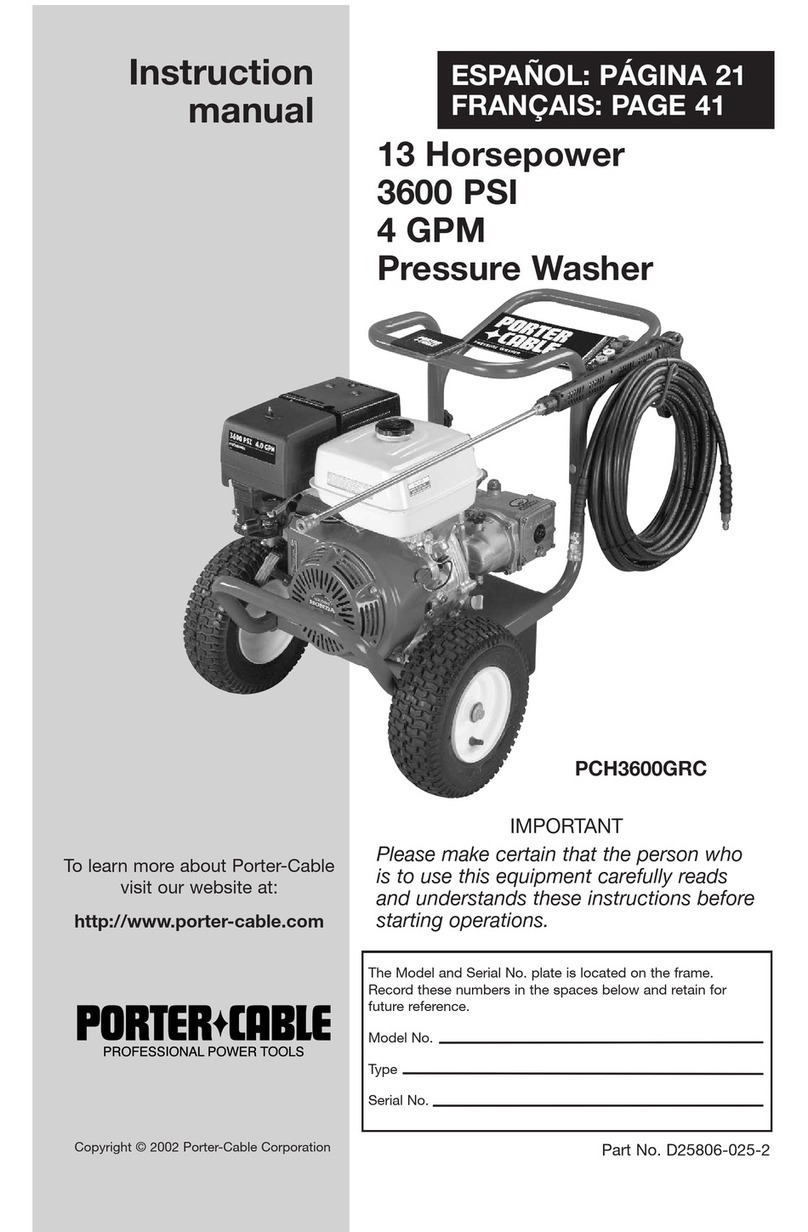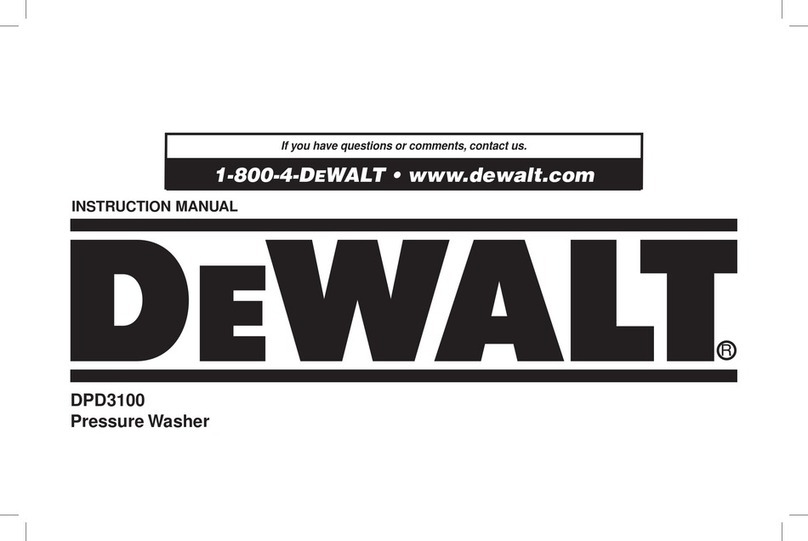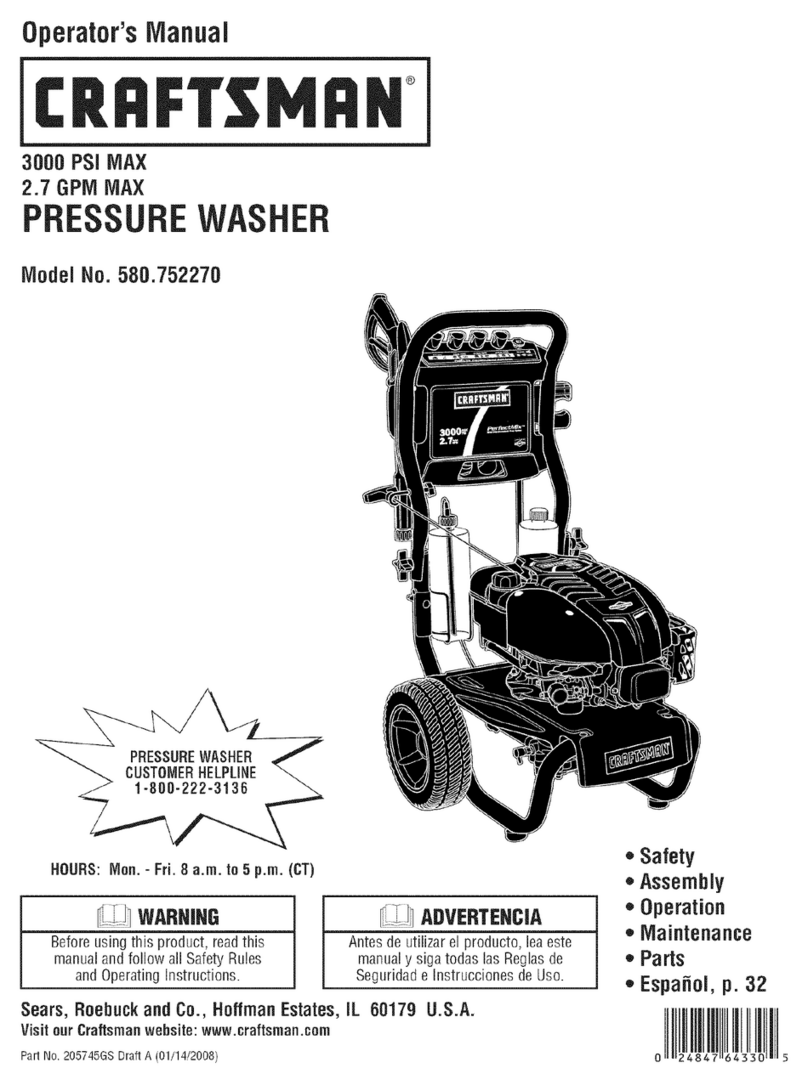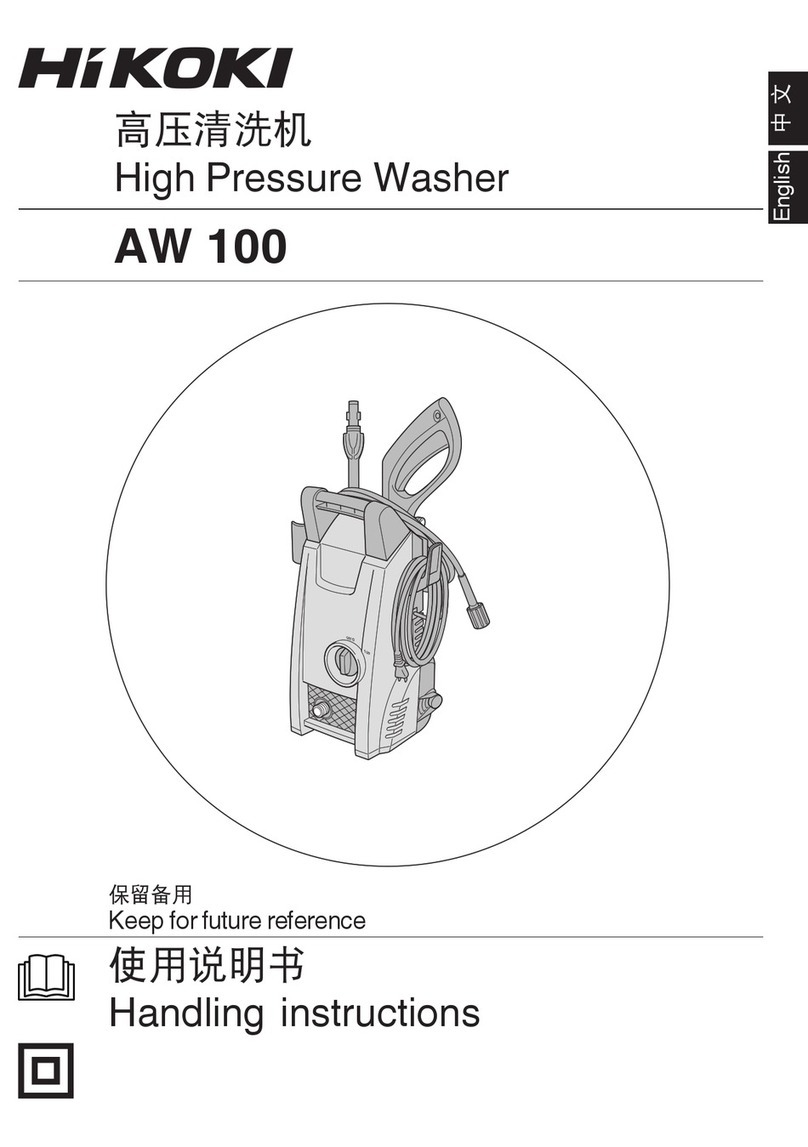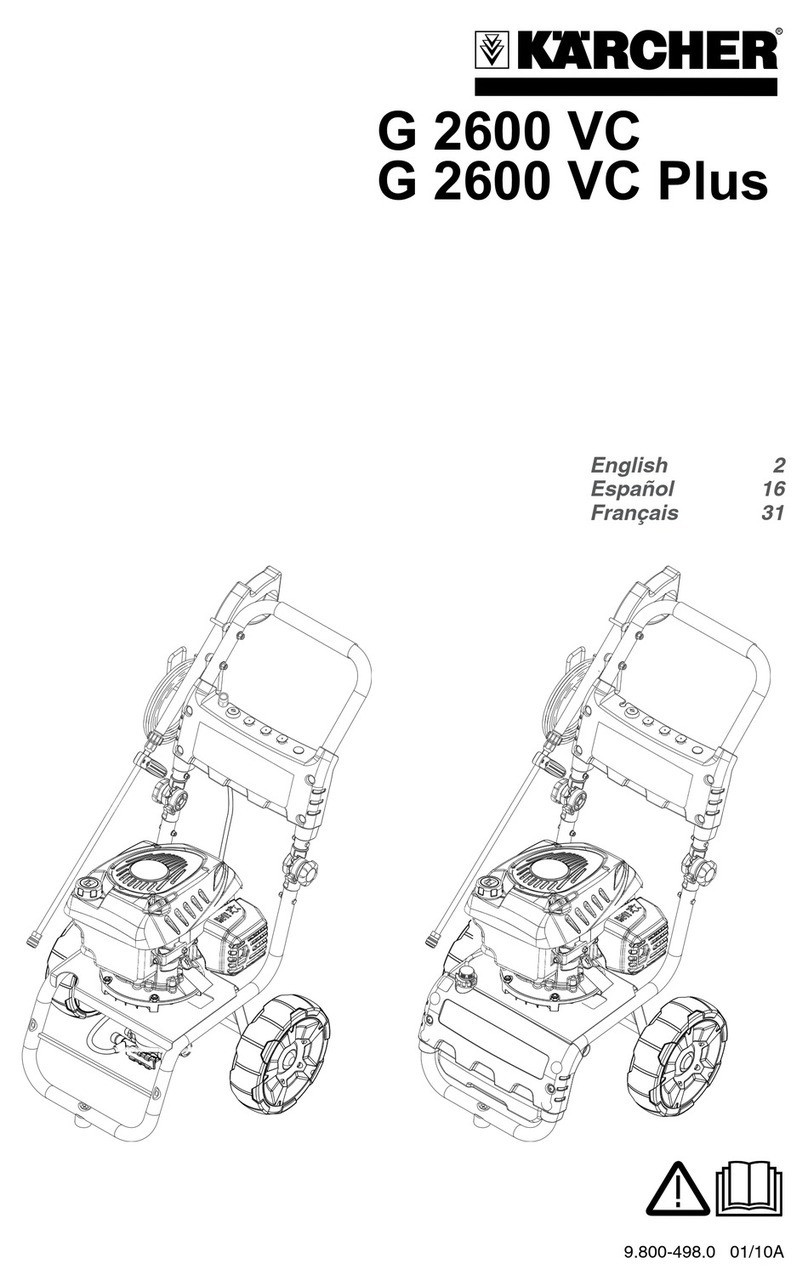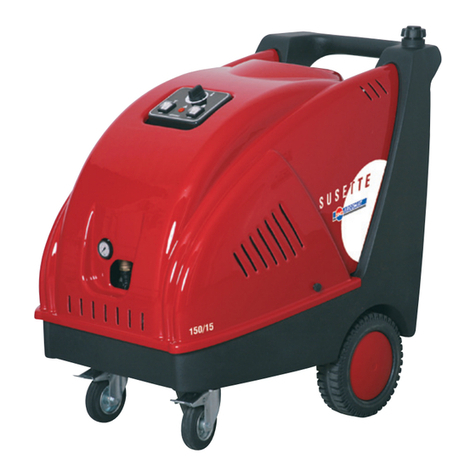
3
IMPORTANT SAFETY INSTRUCTIONS
Dress properly. Wear long pants and long sleeves.
Do not wear loose clothing, gloves, neckties, or
jewellery. They can get caught and draw you into
moving parts. Rubber gloves and nonskid footwear
are recommended when working outdoors. Also
wear protective hair covering to contain long hair.
Do not operate the equipment while barefoot or
when wearing sandals or similar lightweight
footwear. Wear protective footwear that will protect
your feet and improve your footing on slippery
surfaces.
Exercise caution to avoid slipping or falling.
Always wear eye protection with side shields
marked to comply with ANSI Z87.1. Following this
rule will reduce the risk of serious personal injury.
Don’t overreach or stand on a ladder, rooftop, or
other unstable support. eep proper footing and
balance at all times.
Use only recommended accessories. The use of
improper accessories may cause risk of injury.
Follow the maintenance instructions specified in
this manual.
Check damaged parts. Before further use of the
tool, a guard or other part that is damaged should
be carefully checked to determine that it will
operate properly and perform its intended function.
Check for alignment of moving parts, binding of
moving parts, breakage of parts, mounting, and
any other conditions that may affect its operation. A
guard or other part that is damaged must be
properly repaired or replaced by a qualified service
center to avoid risk of personal injury.
Never leave tool running unattended. Turn power
off. Don’t leave tool until it comes to a complete
stop.
eep the engine free of grass, leaves, or grease to
reduce the chance of a fire hazard.
eep the exhaust pipe free of foreign objects.
Follow manufacturer’s recommendations for
safeloading, unloading, transport, and storage of
machine.
Be thoroughly familiar with controls. now how to
stop the product and bleed pressure quickly.
eep tool dry, clean, and free from oil and grease.
Always use a clean cloth when cleaning. Never use
brake fluids, gasoline, petroleum-based products,
or any solvents to clean tool.
Stay alert and exercise control. Watch what you are
doing and use common sense. Do not operate tool
when you are tired. Do not rush.
Do not operate the product while under the
influence of drugs, alcohol, or any medication.
Check the work area before each use. Remove all
objects such as rocks, broken glass, nails, wire, or
string which can be thrown or become entangled in
the machine.
Do not use tool if switch does not turn it off. Have
switches replaced by a qualified service center.
Before cleaning, repairing, or inspecting, shut off
the engine and make certain all moving parts have
stopped. Disconnect the spark plug wire, and keep
the wire away from the plug to prevent accidental
starting.
Avoid dangerous environment. Don’t use in damp
or wet locations or expose to rain. eep work area
well lit.
Never use in an explosive atmosphere. Normal
sparking of the motor could ignite fumes.
Do not operate while smoking or near an open
flame.
Do not operate around dry brush, twigs, cloth rags,
or other flammable materials.
WARNING. Risk of injection or injury –
Do not direct discharge stream at
persons.
SPECIFIC SAFETY INSTRUCTIONS
Use caution when positioning the pressure washer
for use. Warm air from the engine could cause
discolored spots on grass.
Never direct a water stream toward people or pets,
or any electrical device.
Before starting any cleaning operation, close doors
and windows. Clear the area to be cleaned of
debris, toys, outdoor furniture, or other objects that
could create a hazard.


